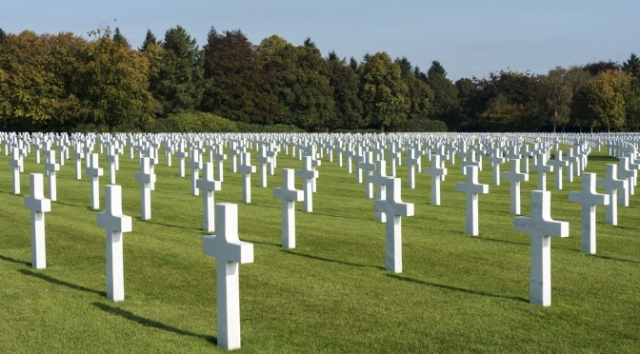The wild poppies may be on their way out of season, but soon war memorials across the world will be sheathed in a sea of red flowers to commemorate the fallen. As Remembrance Day draws near, why not consider a trip to the very ground where the events occurred on one of these Second World War battlefield tours?
Whether your relatives took part in the war or you just want to pay your respects, visiting the places where some of the most important World War battles took place is a moving way to mark the day. Embark on your own World War II battlefield tour this November with a visit to one of these poignant locations.
Operation Dynamo in Dunkirk

Cornered by the advancing German army, at the end of May 1940 the British and French armies had taken to the beaches on the north coast of France. The aim was to evacuate 40,000 troops, but in a much famed ‘miracle’, over 330,000 would make it back to Britain over the nine-day rescue operation. The ‘Little Ships’ played no small part in this battle for survival, with around 850 small vessels making the trip from Ramsgate to save as many as possible.
Dunkirk Beach is a picturesque spot to mark Remembrance Day, with the Dunkirk Memorial at the Dunkirk Town Cemetery standing nearby. The area is also home to the Dunkirk 1940 Museum, which uses film footage and relics from the evacuation to tell the story of Operation Dynamo. About 10km further up the coast you’ll find the beach at Bray-Les-Dunes, where the shipwrecks of the military vessels and ‘Little Ships’ that didn’t make it back home can still be seen at low tide.
D-Day Landings in Normandy

On 6th June 1944, some 156,000 British, American and Canadian troops landed along 50 miles of French coastline – signalling the start of Operation Overlord. Dubbed ‘the beginning of the end of war in Europe’, the invasion sparked the two-month Battle of Normandy, which resulted in the liberation of all of northern France from the German forces.
Pegasus Bridge is a poignant sight which marks the arrival of the first airborne troops, Britain’s 6th Airborne Division, who were soon joined on the ground by the troops arriving at the nearby Sword Beach. From there, the first village liberated was Ranville, where you’ll find the graves of the first casualties at the CWGC Cemetery. There you can also visit the Memorial Pegasus Museum, which was opened by the Prince of Wales in 2000 to display artefacts and personal objects of the 6th Airborne Division.
Operation Market Garden in Arnhem

Operation Market Garden was a daring attempt to bring an early end to the fighting of the Second World War in autumn 1944. The plan was to drop troops into Holland to secure territory and the bridges around Eindhoven, Nijmegen and Arnhem from inside, while simultaneously attacking from the ground. The allies ultimately failed to cross the Rhine at Arnhem, and the war would continue for another year.
Start your visit at Joe’s Bridge, or Bridge No.9 over the Bocholt-Herentals Canal just outside the Belgian town of Neerpelt, the starting point for Operation Market Garden. Around 12km north, across the border into the Netherlands, you’ll find the Valkenswaard War Cemetery, to visit the graves of those killed in the conflict. The town of Arnhem lies an hour and 15 minutes’ drive to the north, where the Airborne Museum ‘Hartenstein’ offers an eye-opening account of the event.
The Battle of the Bulge in the Ardennes

The last major offensive by the Germans on the Western Front was the worst battle the United States fought in the Second World War. Attempting to split the Allied armies by catching them off guard, an attack was launched through the Ardennes to Antwerp on the 16th December 1944 – however, unable to continue the affront for a lack of fuel, the Germans retreated unsuccessful at the end of January. The formation of the US troops on aerial maps during the conflict led to the name the “Battle of the Bulge”.
A visit to the Henri-Chappelle American Cemetery in Belgium is a stark reminder of the scale of the fighting, with white crosses marking the thousands of lives lost. From there, a 45-minute drive south-east will bring you to Baugnez 44 Historical Centre, with dioramas, artefacts and films telling the story of the conflict. From there, move on to the Siegfried Line in Hollerath – the site of the first attack – where you’ll find anti-tank defences, trenches, and memorials to both the American and German troops.
Planning to travel for Remembrance Day and want to discover one of these Second World War battlefield tours? Book your ferry crossing to France or Belgium, or read about the best First World War battlefield routes.



